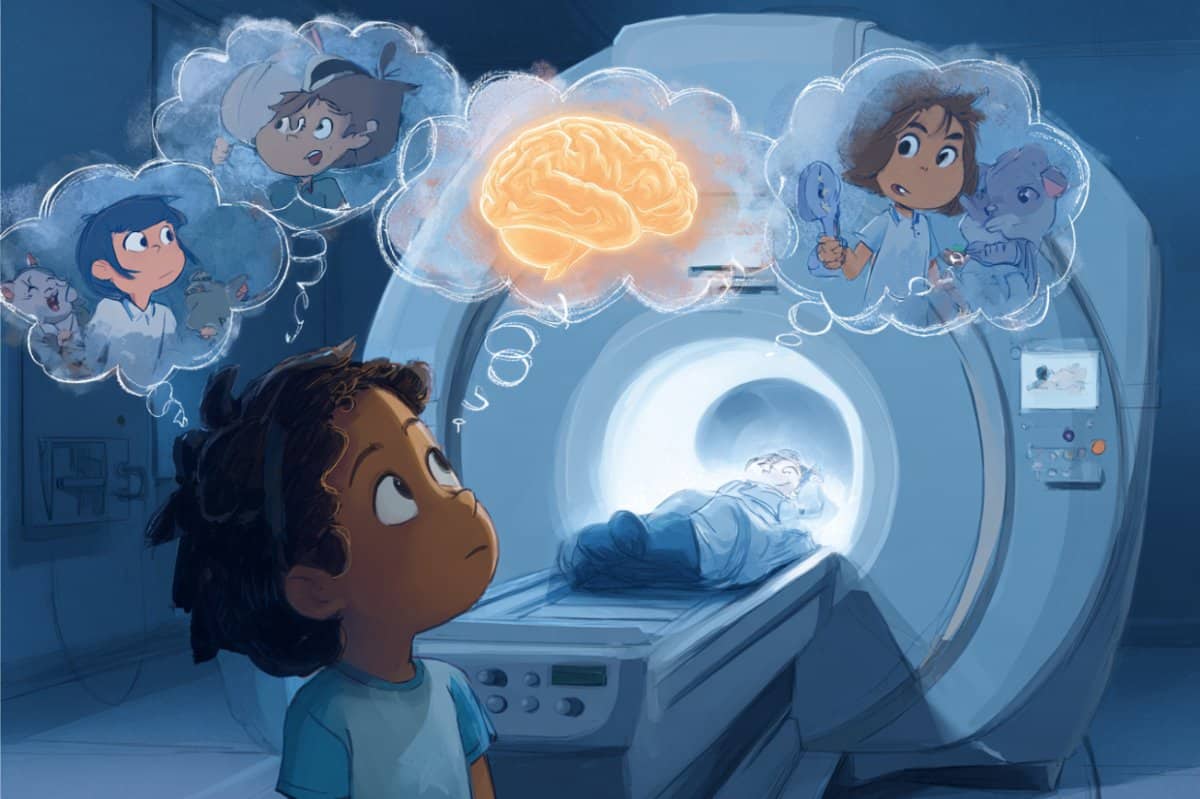Summary: Understanding others’ beliefs—especially false ones—is key to human communication and begins to develop between ages three and five. In a new study, researchers observed children’s brain activity while they watched movies in an MRI scanner to investigate the neurological roots of Theory of Mind (ToM).
They found that the cerebellum, a brain area typically linked to motor control, plays a pivotal role in supporting social cognition during childhood. This region appears to drive information toward the cerebral cortex in young children, essentially scaffolding later mental state reasoning and empathy.
Key Facts:
- Cerebellar Role: The cerebellum helps establish Theory of Mind by supporting early social cognitive processing.
- Developmental Shift: In children, the cerebellum sends information to the cortex—opposite the adult pattern.
- Clinical Relevance: Early cerebellar injury may contribute to social deficits seen in conditions like autism and schizophrenia.
Source: Max Planck Society
We can’t see what other people are thinking, so we have to infer it and that’s very crucial for our communication as humans. That’s how we create shared meaning and that’s how we choose our words to be understood, a kind of mental empathy.
A pivotal milestone in the development of Theory of Mind reasoning occurs between the ages of three and five years, a breakthrough period in which children typically start succeeding in false-belief tasks, widely regarded as a critical test of Theory of Mind abilities.

These tasks require children to recognize false beliefs held by a story character, typically in the context of the character’s mental misrepresentations regarding an object’s location, content, or nature. Successfully passing false-belief tasks is argued to reflect the emergence of representations of others’ mental states.
To find out more about this critical period where social cognition evolves, scientists from the Max Planck Institute for Human Cognitive and Brain Sciences used collected data from 41 Children between three and twelve years.
“We first aimed to identify clusters that are generally activated during Theory of Mind processing in the developing cerebellum, regardless of children’s Theory of Mind abilities. The children have been watching movies in an MRI scanner while their brain activity was recorded.
“This test with movie scenes revealed significant involvement of the cerebellum, a brain region mostly known for motor functions but lately also language and cognition.”, explains Aikaterina Manoli, first author of the study.
Neurodevelopmental and psychiatric disorders
According to her and colleagues, pediatric evidence indicates that early-life cerebellar injury often results in severe and persistent changes in social behavior, frequently observed in the context of neurodevelopmental and psychiatric disorders such as autism spectrum disorder and schizophrenia.
“We know from lesion studies that when you get an injury in the cerebellum early in life it is much harder to recover from it than when you get it as an adult.
“What we found is that the cerebellum gives more information to the cerebral cortex in children whereas in adults the cerebral cortex gives more information to the cerebellum. So there is like an inverse loop going on. We therefore think that the cerebellum is setting up the stage for cortical processes to emerge in childhood.”, says Manoli.
“Our findings suggest a significant association between early-life changes in the cerebellum and Theory of Mind development, insofar as the cerebellum stores information that support the subsequent prediction of mental states.”, says Sofie Valk, who shares the last authorship with Charlotte Grosse Wiesmann.
“Our results also align with evidence suggesting that the socio-cognitive deficits of autism spectrum disorder are associated with functional and structural abnormalities of the cerebellum. It would be interesting to explore the function of cerebellar activations in younger children and infants.
“Even though verbal false-belief Theory of Mind reasoning only emerges between three and five years of age, in non-verbal tasks, infants younger than two years already seem to consider others’ mental states. Future studies should assess the extent to which different brain regions relate to the non-verbal abilities observed in infants.”
About this neuroscience and empathy research news
Author: Aikaterina Manoli
Source: Max Planck Society
Contact: Aikaterina Manoli – Max Planck Society
Image: The image is credited to Neuroscience News
Original Research: Open access.
“Functional recruitment and connectivity of the cerebellum is associated with the emergence of Theory of Mind in early childhood” by Aikaterina Manoli et al. Nature Communications
Abstract
Functional recruitment and connectivity of the cerebellum is associated with the emergence of Theory of Mind in early childhood
There is accumulating evidence that the human cerebellum is heavily implicated in adult social cognition.
Yet, its involvement in the development of Theory of Mind (ToM), a hallmark of social cognition, remains elusive.
Using openly available functional MRI data of children with emerging ToM abilities (N = 41, age range: 3-12 years) and adults (N = 78), we show that children who pass a false-belief assessment of ToM abilities activate cerebellar Crus I-II in response to ToM events during a movie-watching task, similar to adults.
This activation is not statistically significant in children who do not pass the ToM assessment.
Functional connectivity profiles between cerebellar and cerebral ToM regions differ as a function of children’s ToM abilities.
Notably, task-driven connectivity shifts from upstream to downstream connections between cerebellar and cerebral ToM regions from childhood to adulthood.
Greater dependence on connections emerging from the cerebellum early in life suggests an important role of the cerebellum in establishing the cognitive processes underlying ToM in childhood and thus for the undisrupted development of social cognition.






